In California, the assembly of the research probe Clipper is being completed. NASA allocated 5 billion dollars for this project. This significant amount of money was invested by Americans in the exploration of one of Jupiter’s satellites.
As planned, the “Clipper” will depart for Europa in October 2024. However, Europa is just one of the 95 moons orbiting the gas giant. Why was this particular moon chosen for such a costly mission? This is the topic of discussion on the “Science and Technology” program with Mikhail Borzenkov on REN TV.
The Unique “Freckles” on Europa, Jupiter’s Moon
Europa, one of Jupiter’s satellites, is renowned for its peculiar features. The icy crust that envelops the moon measures a staggering 20 kilometers in thickness. However, what caught the attention of scientists are the distinctive furrows and spots, affectionately referred to as “freckles.” These freckles have piqued the interest of researchers as they might indicate the potential habitability of Europa.
One intriguing hypothesis suggests that these enigmatic markings are a result of a warm ocean that lies beneath Europa’s icy shell. The presence of saltwater is believed to heat up the ice from within, leading to the formation of these unique freckles. Furthermore, scientists propose that Europa possesses a magnetic field and potentially even dissolved oxygen within its waters. To verify these assumptions, the forthcoming “Clipper” probe is set to embark on an exploratory mission.
“Our mission is to conduct measurements of the magnetic field surrounding Europa and conduct surface exploration using spectrographic sensors. These sensors will provide valuable insights into the composition and activity of Jupiter’s moon. Furthermore, we aim to map the distribution of organic compounds on Europa’s surface and thoroughly study its ice shell,” stated Karen Kirby, the spacecraft’s systems engineer.
If our probe confirms even a fraction of these hypotheses, it would signify the potential for humanity to one day inhabit Europa as an alternative to Earth.
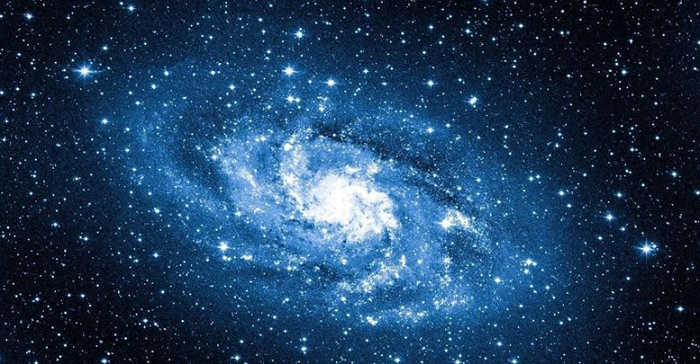
Is it possible for life to exist on the Moon, Mars, and Venus?
Why go so far when we have the Moon, Mars, and Venus right here in our own solar system? While these celestial bodies are the closest to Earth, they may not be the most suitable for colonization. The Moon is barren like a desert, Venus is a hellish environment, and Mars was more hospitable millions of years ago.
However, our solar system boasts five other large planets and five dwarf planets, each with over 200 satellites orbiting them. Perhaps we should focus our search on these other celestial bodies to find a more suitable environment for life?
One of the initial candidates for exploration is Mercury. The journey to Mercury is only slightly longer than that to Mars, and it also possesses frozen water. However, unlike the Red Planet, Mercury contains an abundance of minerals that can serve as construction materials for future bases. Additionally, there is a vast amount of energy available to power these bases. The solar radiation on Mercury is nine times more intense compared to Earth, making it an ideal source for harvesting energy using solar panels.
However, it is not as straightforward as it seems. The closest planet to the Sun experiences extreme temperature variations, ranging from 430 degrees during the day to minus 200 at night. Furthermore, a day on Mercury lasts six Earth months. Nonetheless, these challenges present opportunities. The transitional zone between day and night on Mercury could potentially serve as an ideal habitat if cities were built to move along with the sunset.
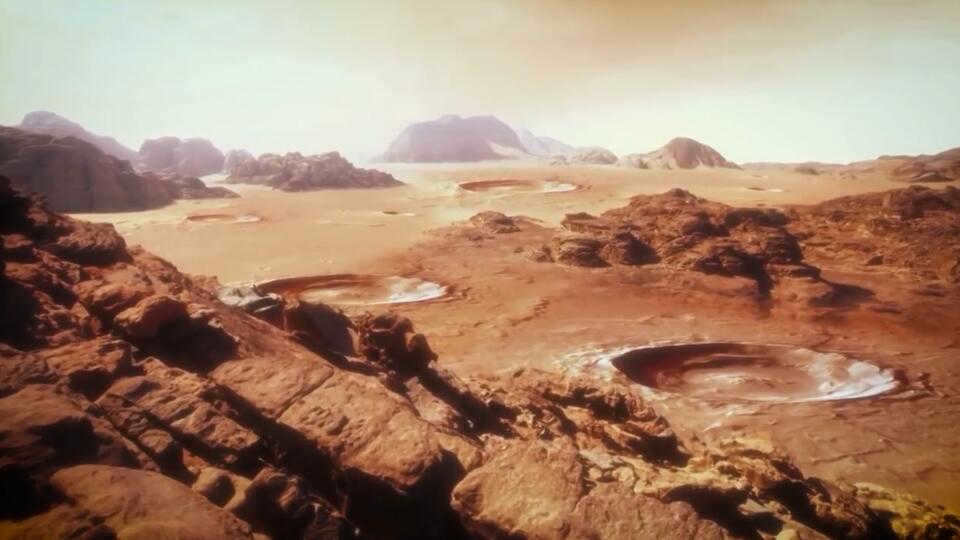
You won’t believe it, but this could actually be suitable for earthly projects. Vitaly Troshin, who is based in St. Petersburg, has created a technology for constructing portable houses. The architect suggests using it in the Arctic, yet why not apply this innovation to the development of other planets as well?
"I only have two movements: the movement of the building on tracks, similar to a tower crane. And you can even use it without electricity (to operate. – Editor’s note), because I slightly elevated the platform and it rolled. I raised it in the opposite direction and it descended. And in addition, there are vertical movements – the legs. The tower retracted its legs, and the tracks were traversed", – Vitaly Troshin shared.
It is possible to construct stationary bases on the nearest planet to the Sun. The craters on Mercury might be suitable locations for this purpose. The temperature variation there is significantly smaller compared to the surface. However, before establishing the bases, the craters need to be thoroughly explored. The latest planetary rover, DuAxel, is well-suited for this task.
“This rover has the ability to separate into two parts in order to access the craters and lower one of the blocks using a cable, and then retrieve it along with the samples. Its initial assignment will be on Mars, but our plans include sending it to other planets as well. For instance, Mercury,” stated Jessica Samuels, the ground project manager for the Mars 2020 mission.
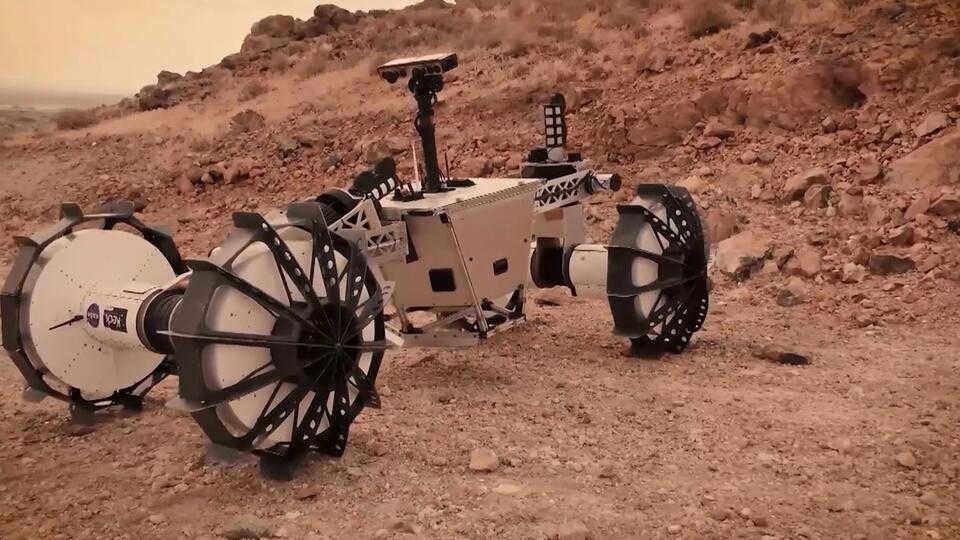
The only thing left to do is to extract oxygen from the planet’s thin atmosphere and strengthen its magnetic field, and then we will be able to settle in. However, NASA made a surprising decision to allocate a significant amount of money to explore one of Jupiter’s moons instead of Mercury.
“There is a growing curiosity about the possibility of life existing beyond Earth. Astrobiologists and experts alike have now shifted their focus to searching for signs of life on these distant planets or their moons. Many believe that the most promising celestial body for this search is Europa,” stated Nathan Eismont, a leading researcher at the Institute of Space Research of the Russian Academy of Sciences.
Satellites of Jupiter that Could Potentially be Colonized
There are other satellites orbiting the gas giant that might also be suitable for colonization. For instance, Ganymede possesses a magnetosphere, which provides some protection against the hazardous radiation emitted by Jupiter. Another candidate is Titan, enveloped in a dense atmosphere, or Callisto, which is geologically stable and offers near-perfect conditions for establishing an extraterrestrial base. However, before any colonization efforts can begin, the challenging task of traversing over 700 million kilometers to reach Jupiter’s orbit must be accomplished.
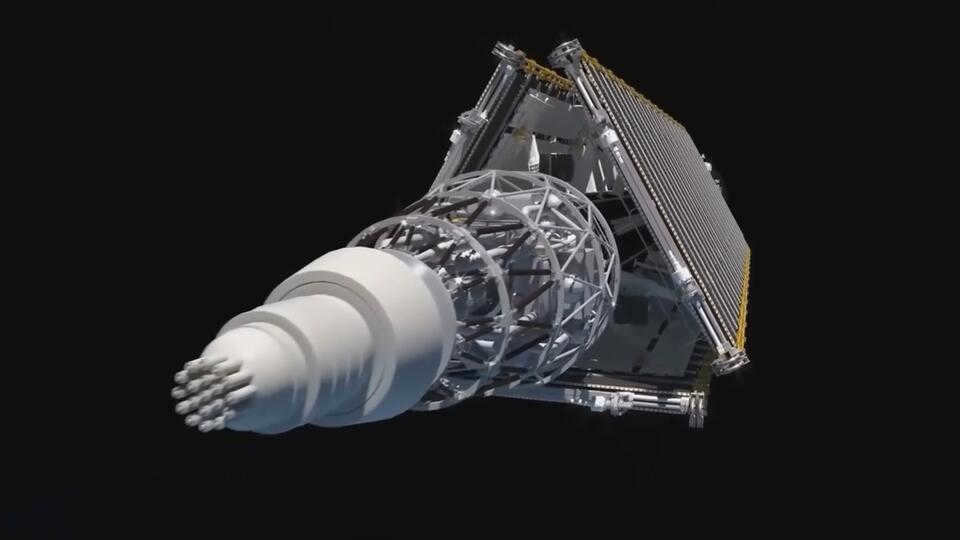
Are you puzzled by the feasibility of this? The main concept revolves around the utilization of nuclear energy to fuel the electric motors of “Zeus”. This groundbreaking tug has the capacity to transport a staggering 20 tons of cargo in a single journey, surpassing the cumulative cargo capability of all transportation vehicles in the United States over the past three decades. By harnessing the potential of the appropriate vessel, mankind will have the ability to explore not only the outer reaches of our solar system, but also the vast expanse of deep space, potentially encountering extraterrestrial life forms.
“Exoplanets are planets located outside of our solar system that have the potential to support some form of life, even if it is just microbial life. We have a general understanding of the types of life that could potentially exist on these planets, based on what we know about life on Earth. However, in order to determine if these exoplanets can actually support life, we need to first identify the specific characteristics that would make this possible. One key factor is the presence of an atmosphere.” – Nathan Eismont clarified.
Rapid Expansion
A potential hurdle lies in the fact that it could take centuries to identify a suitable exoplanet and travel to it. If humanity desires to expedite the process, must it confine itself to the planets within our own solar system? Not necessarily. It is possible to colonize the star itself.
"How might this be accomplished? One possibility is to construct a spherical structure with a radius equivalent to that of a planet, such as Mars. This sphere would emit no energy and draw in no external resources. Consequently, any emissions it does produce would be of such a minuscule magnitude that they would go unnoticed by anyone light years away. In effect, we would be shielded from external detection, thereby creating an isolated world, – explained Nathan Eismont.
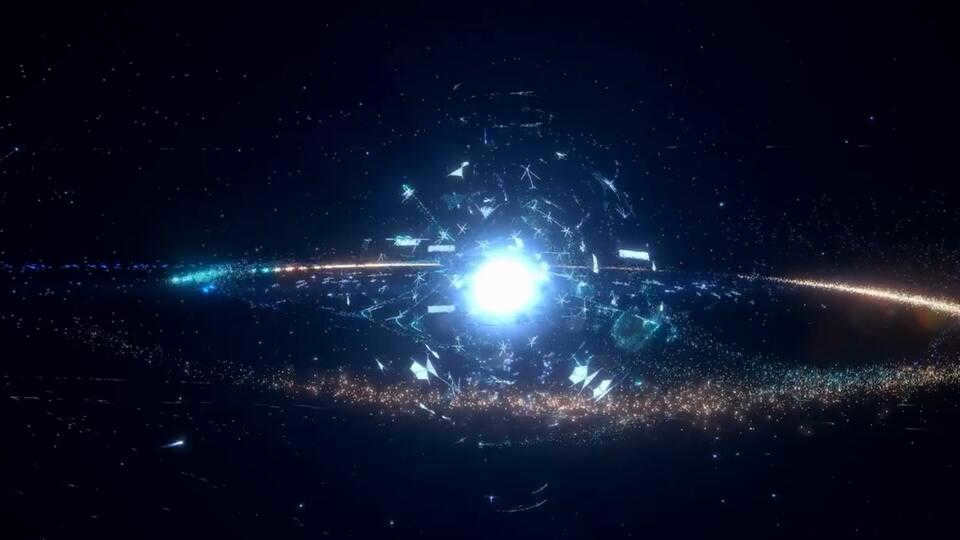
An opportunity exists for a colony to establish itself within a celestial sphere. This astroengineering concept was initially proposed by American physicist Freeman Dyson in the mid-20th century. For a considerable period of time, the idea remained purely theoretical. However, a recent researcher from the United States has devised a plan for the realization of constructing a galactic megastructure.
“It is feasible to construct Dyson’s sphere by dismantling a planet of Jupiter’s magnitude and utilizing it as construction material. Naturally, it is regrettable to destroy a planet. Nevertheless, constructing a megastructure is crucial for human advancement and technological progress in the future, as the demand for electricity will increase exponentially.” – stated science journalist and Dyson Sphere researcher Jamie Green.
Tune in to REN TV’s program “Science and Technology” with host Mikhail Borzenkov for a glimpse into the awe-inspiring advancements, groundbreaking scientific discoveries, and revolutionary innovations that have the potential to shape the future of humanity.

The universe is a fascinating and enigmatic realm that has captivated the curiosity of scholars throughout the ages. Astronomers dedicate countless hours to observing the heavens, performing intricate calculations, and exploring the farthest reaches of space in their quest to uncover its hidden secrets and provide answers to the mysteries that have puzzled humanity. While the solar system represents just a fraction of the vast expanse of outer space, planet Earth stands out as the sole known celestial body where life thrives.
What is an astronomer?
An astronomer is an individual who dedicates their time to studying celestial entities such as stars, comets, planets, and meteors. Utilizing specialized tools, they are able to observe objects that are located millions of light years away. One such tool is a telescope, which functions similarly to a magnifying glass. When looking through a magnifying glass, objects appear larger. A telescope consists of a collection of large magnifying glasses that enable astronomers to view celestial bodies. The findings and observations made by astronomers have contributed to the development of calendars, as well as the division of time into months, weeks, and days.
The ancient Greeks were the pioneers in astronomy, being the first to prove that the Earth is spherical in shape. It was Eratosthenes who made significant strides in accurately calculating the circumference of the planet, while the renowned astronomer Nicolaus Copernicus introduced the groundbreaking concept that the Earth, along with the other planets, revolves around the Sun. Among the notable astronomers of history, Galileo Galilei stands out. Approximately 300 years ago, he revolutionized the field with his invention of the telescope, allowing him to observe the mountains and craters on the Moon for the first time. This remarkable device consisted of a small tube equipped with two magnifying lenses.
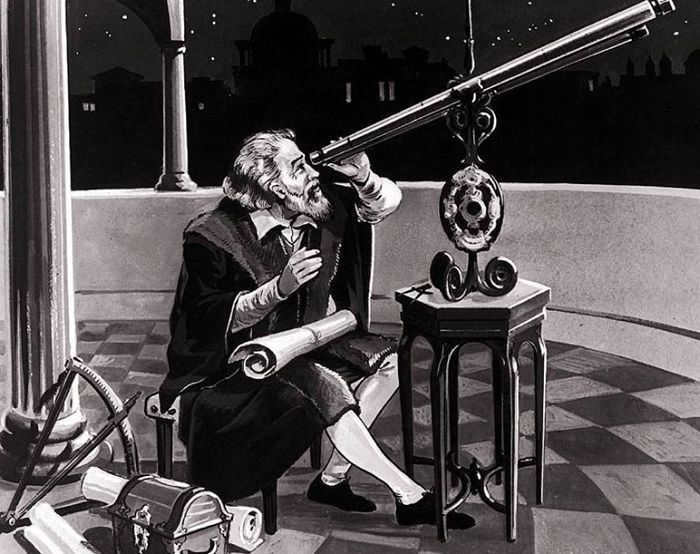
Subsequently, more sophisticated models featuring cameras emerged, enabling individuals to observe celestial bodies that are imperceptible to the unaided human eye on our planet.
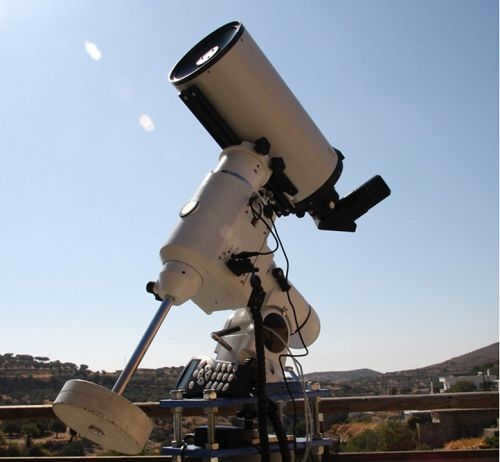
Despite being one of the oldest professions, there is a limited number of astronomers in the modern world. There are two distinct categories of specialists:
- Theorists, who work with theoretical material, study the history of the universe, develop methods for studying the cosmos, and analyze information gathered by observers;
- Observer-astronomers, who engage in direct observation and rely on theoretical material. They have the ability to either confirm or refute existing developments, and also develop new methods of observation.
There is a common misconception that astronomers spend the majority of their time observing through telescopes. However, this is not entirely accurate. Astronomers also spend a significant amount of time processing data from their observations, modeling space phenomena, tracking the movements of celestial bodies, and presenting their findings at conferences. These tasks require a range of qualities, including observation skills, determination, patience, diligence, good eyesight, and a sense of responsibility. Even those who are new to the field of astronomy should possess these qualities.
The Universe refers to a vast expanse filled with stars, planets, galaxies, black holes, nebulae, and more. It encompasses all physical existence. Planet Earth, in comparison, is merely a tiny dot in this immense realm. Occasionally, the term “Universe” is used interchangeably with space, the world, or nature. However, this definition is scientifically inaccurate.
As per one hypothesis, approximately 14 billion years ago, the cosmos originated due to the event known as the Big Bang, which still remains shrouded in mystery. Prior to this moment, all matter was densely packed together, resembling an egg. This compressed mass was infused with intense heat and energy, causing it to expand and ultimately explode, releasing an enormous amount of energy. In a fraction of a second, the resulting mass began to cool, giving rise to a blend of atomic particles. Over time, this mixture coalesced into a cloud of matter, from which galaxies began to form. It took several thousand years for the primordial fog to dissipate and the temperature to decrease. After 10 billion years, within a galaxy named the Milky Way, the Sun, Earth, and other planets of the solar system came into existence. Primitive life forms gradually emerged.
Currently, the concept of the universe is built solely on theories and hypotheses, with the majority of them remaining unverified. Numerous enigmas persist, awaiting the discovery of answers by scientists. The diligent observations and research conducted by astronomers have revealed that galaxies persistently drift apart. Thus, the expansion of the Universe remains an ongoing phenomenon.
The idea behind the solar system
Therefore, the solar system is a small component of the Milky Way galaxy. It encompasses the Sun and the various planets.
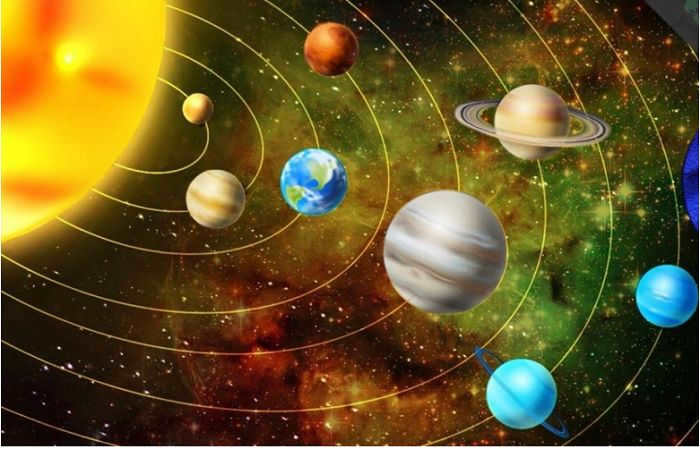
There are two primary theories regarding the origins of the solar system:
- According to I.Kant, the Sun was initially formed from a frigid dusty nebula, and subsequent to its formation, the planets took shape.
- P.Laplace, on the other hand, posited that the original nebula was composed of gas and was scorching hot. As a consequence of intense rotation and the force of gravity, rings began to separate from the nebula. As these rings cooled and condensed, they transformed into planets.
Both scientists inclined towards the belief that the solar system was the outcome of nebular evolution, hence their theories are commonly referred to as the Kant-Laplace hypothesis.
Celestial bodies within our solar system
The Sun is widely recognized as the most massive object in our Solar System. All other celestial bodies orbit around it in elliptical paths, with the exception of comets.
Of particular significance within the solar system are the planets. These celestial bodies have diameters that exceed 1000 square kilometers and revolve around the central star without possessing their own source of light. The planets in our solar system are distinctive formations, taking on the shape of rotating ellipsoids. The majority of them possess an atmosphere that is held together by the force of gravity. The planets within the solar system include:
- Mercury;
- Venus;
- Earth;
- Mars;
- Jupiter;
- Saturn;
- Uranus;
- Neptune.
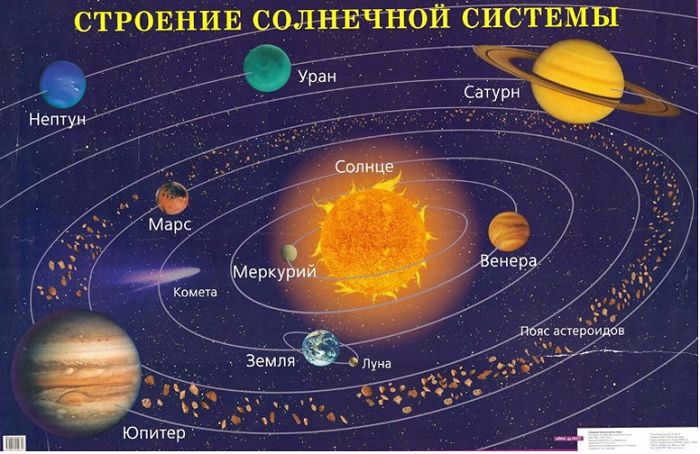
Pluto, which was discovered in the early 1900s, is the object in the Solar System that has been studied the least. Once considered the 9th planet, it was reclassified as a dwarf planet in 2006. The main feature of Pluto’s surface is the presence of frozen methane. Due to its significant distance from Earth, determining its precise size and conducting research on it is challenging.
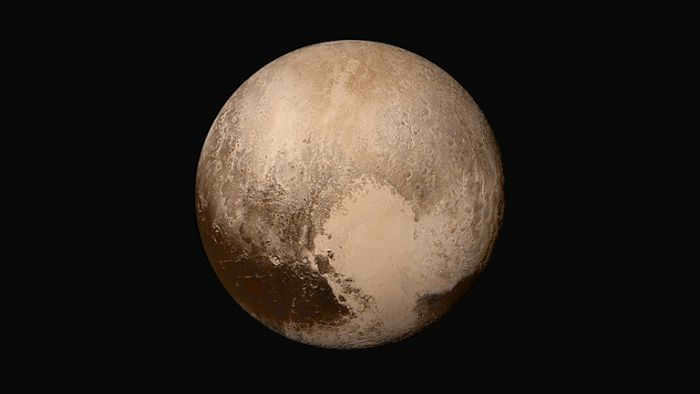
Mercury is the closest planet to the Sun, while Earth is the only known planet to support life.
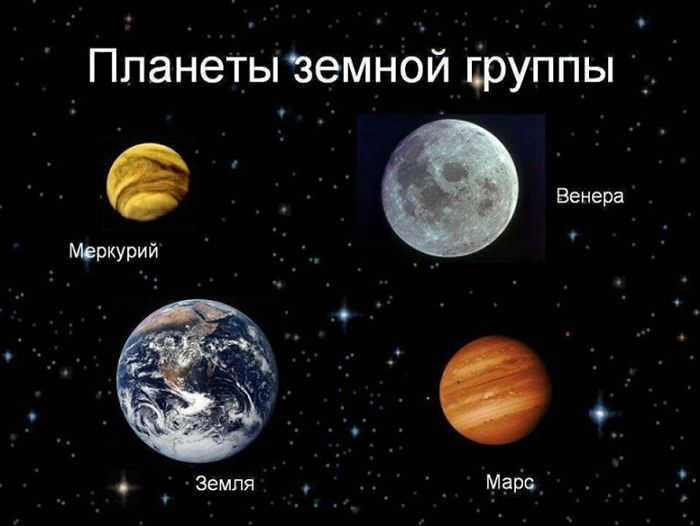
Neptune, Uranus, Jupiter, and Saturn are some of the giant planets in the solar system.

It is important to note the satellites of the solar system individually. Nearly every planet possesses them. Saturn boasts the highest number of satellites – 82. Jupiter, the largest planet in our solar system, has 79 satellites. Earth has one, while Mercury and Venus have none.
Between the fourth and fifth planets lies a belt of asteroids – these constitute the smaller bodies of our solar system. Among them, Ceres and Vesta are the largest, accounting for half of the asteroid belt’s mass. These celestial bodies consist of rock, carbon, and metal. Each has been assigned a number based on the order of their discovery.

A comet is a small celestial object that has a resemblance to a dirty, well-formed snowball. The main component of a comet is comprised of gas, dust, and ice particles, which form the nucleus. Additionally, a comet possesses a vibrant tail that always points away from the Sun. The name “comet” originated from the Greek word “kosmaty” or “hairy” due to its tail. At times, the tail can be so extensive that it spans from one planet to another. The particles within the tail are widely spaced, allowing another comet’s nucleus to pass through them effortlessly. Comets move through space as a result of being attracted by the gravitational force of the Sun or other stars.
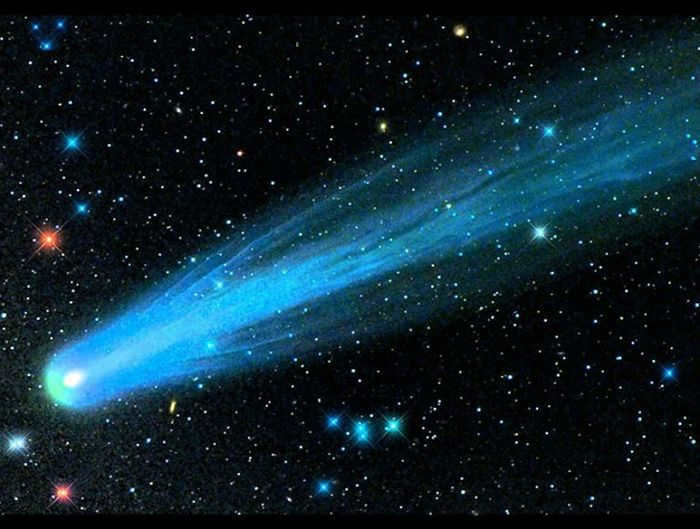
Meteoroids, which are also part of the solar system, are celestial objects composed of rock fragments or dust particles. When they enter the Earth’s atmosphere, they create a bright streak of light known as a “shooting star” due to the friction caused by their movement.
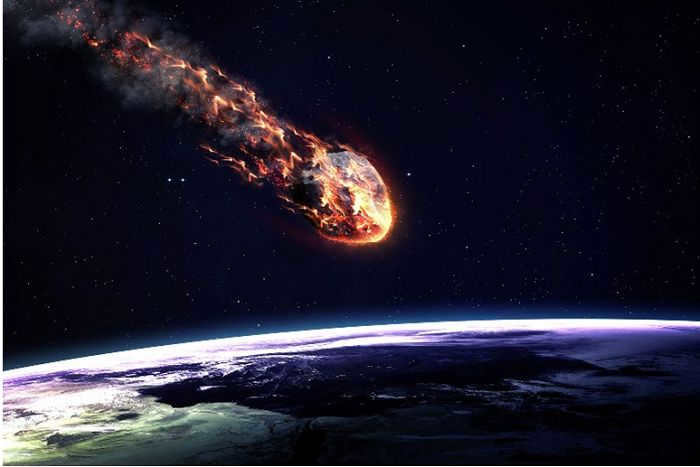
The term meteorite refers to celestial objects that have successfully landed on the Earth’s surface.
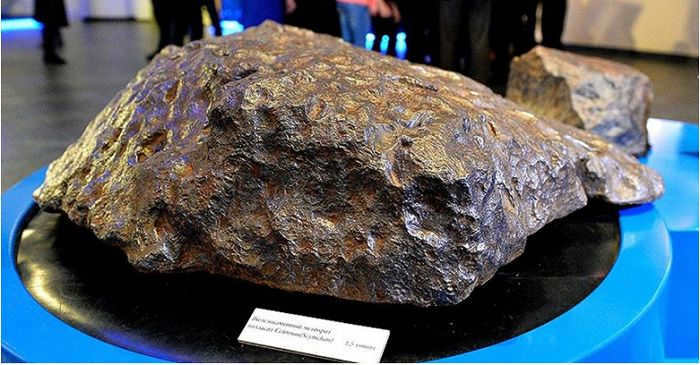
Creating a Model of the Solar System
One of the most effective ways to gain a deeper understanding of the planets’ movements is by constructing a model of the solar system. There are various materials that can be utilized for this purpose, including paper, cardboard, foam balls, and fabric. In recent times, computers have advanced to the point of being able to generate modern 3D models of the solar system, which accurately depict the orbits and motions of the planets and other celestial bodies.
Here are step-by-step instructions on how to create a model of the planets in the solar system:
- Start by obtaining a large piece of cardboard to serve as the base. Paint it black using acrylic paint. Use lighter-colored paint to add splashes.
- Utilize corrugated paper to construct a solar disc through the process of “twisting.” Then, apply orbits using silver paint.

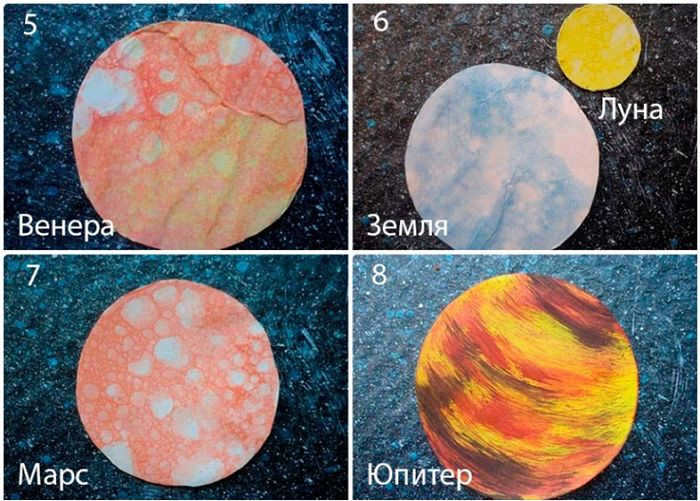
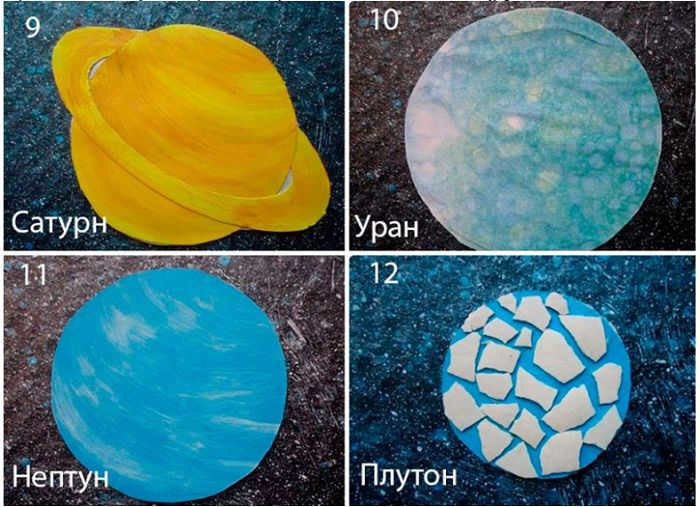
Source
What is the Sun
The Sun is the primary star in our solar system, but it is not the only one in the Milky Way galaxy. It has a diameter of 1,392,000 square kilometers, which is 109 times bigger than the size of Earth. Even though the Sun is quite large, there are stars in the galaxy that are even larger than it, such as Sirius, Pollux, Arcturus, Aldebaran, Rigel, Antares, and Betelgeuse.
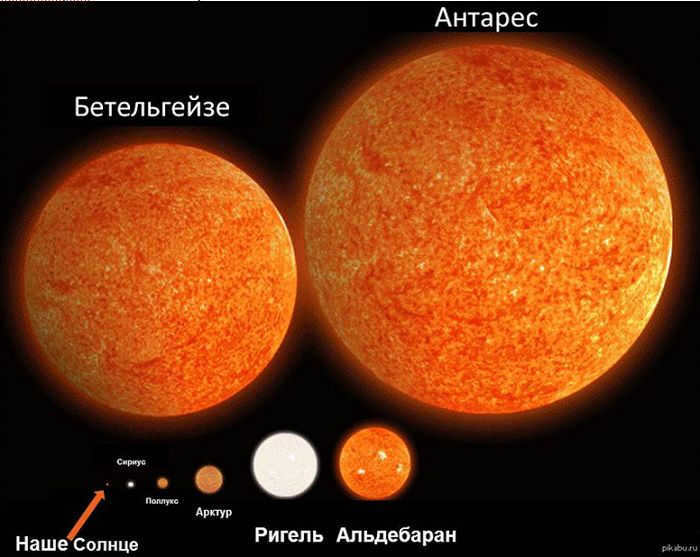
When observed from our planet, the celestial body appears to have a yellow hue. However, in reality, the star’s true color is white. This optical illusion is caused by the Earth’s atmosphere.
The Sun, with its mass accounting for 99.87% of the total mass of the solar system, has a temperature of 5505 degrees. Unfortunately, it is impossible to study the Sun up close as any spacecraft sent towards it would burn up before reaching its surface. The closest star to the Sun is Proxima Centauri, located at a distance of 4.24 light years. To put it into perspective, this distance is approximately 270,000 times greater than the distance from Earth to the Sun.
The Sun is responsible for sustaining life on our planet. Its energy is utilized by plants to convert carbon dioxide into oxygen, allowing humans and animals to breathe. Solar energy has been harnessed by mankind for a considerable amount of time. One prominent application of this is seen in the use of solar panels, which are essential for recharging during space missions.
Planet Earth: Our Home in the Solar System
Out of all the celestial bodies in the vast expanse of the solar system, our planet Earth is the only one that teems with life. Positioned as the third planet from the Sun, it enjoys just the right amount of warmth and energy to sustain a wide array of organisms. If our planet were situated any closer to the Sun, the scorching heat would obliterate all living beings. Conversely, if it were positioned farther away, the freezing cold would render life impossible.
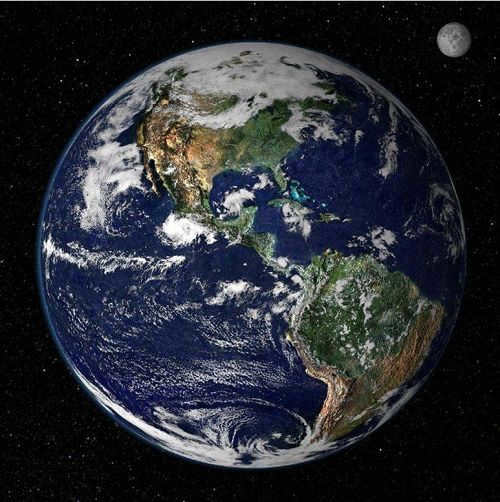
The planet in the Earth group has a diameter of 13 thousand kilometers, making it the largest. The Moon is the only natural satellite of the planet Earth.
The Earth’s shape is ellipsoidal and it rotates around its axis, which intersects the surface at the geographic poles. It takes 24 hours to complete one rotation. Additionally, the Earth revolves around the Sun, completing a full cycle in 365 days. The path of this rotation is called an orbit.
Out of all the celestial bodies studied by scientists, the Earth’s atmosphere contains oxygen. Vegetation is responsible for producing one-fifth of this oxygen. The troposphere is the lowest part of the atmosphere, where air masses are constantly in motion, influencing the weather. The ozone layer acts as a shield against harmful solar radiation and absorbs the majority of ultraviolet rays.
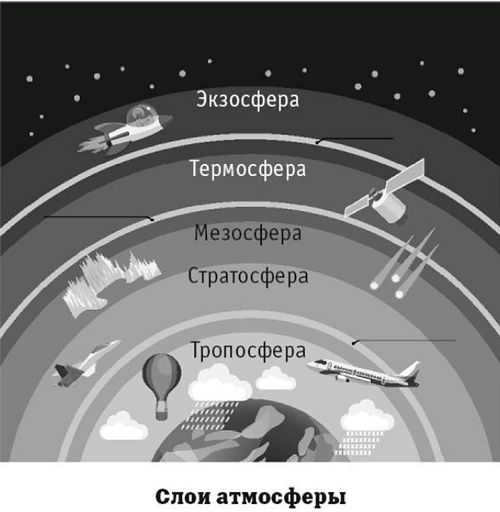
The Earth’s surface is mostly covered by water, with only 29% being land. It is believed that life first originated in the ocean around 3.8 billion years ago. Unlike other celestial bodies, Earth has relatively few visible craters. This is due to the presence of our atmosphere, which burns up most incoming space objects before they can reach the surface. Additionally, objects that do make it through the atmosphere lose speed and often result in insignificant craters upon impact. The erosive forces of water and wind also play a role in the destruction of craters and even entire mountain ranges over millions of years.
Earth’s Natural Satellite
The Moon, Earth’s closest celestial body, is approximately one-fourth the size of Earth. While not the largest satellite in the solar system, the Moon’s gravitational field interacts with Earth to create tides.
The Moon itself does not emit light. Only the portions of the Moon that are illuminated by sunlight are visible from Earth. The Moon goes through different shapes, known as lunar phases, which repeat every four weeks.
- A thin crescent shape indicates a waxing moon, symbolizing growth.
- The half-moon shape, visible during the evening and night, represents the first quarter phase.
- The full moon phase occurs when the Moon becomes circular and can be seen throughout the entire night;
- The last quarter phase is when half of the Moon’s disk is visible in the morning. At this time, the Moon takes on the shape of the letter “C”, symbolizing its “aging”;
- The New Moon phase lasts for several days, during which time the Moon cannot be observed in the sky.
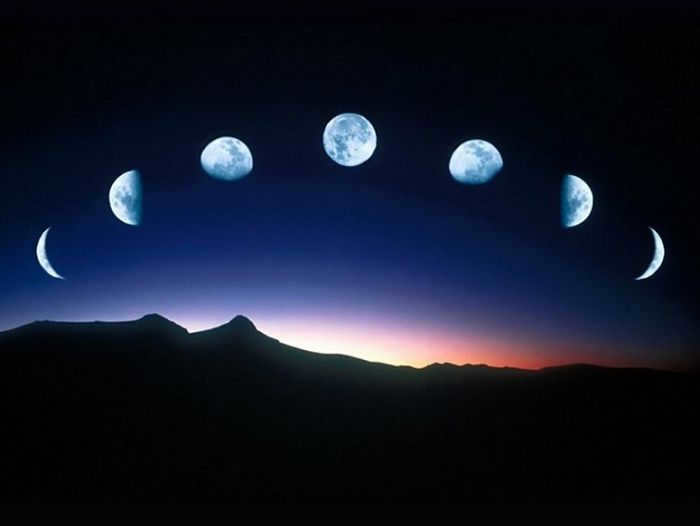
The Moon always faces the Earth with the same side, leaving its reverse side unseen by mankind until 1959 when photos of it were taken using an artificial satellite.
When observing the Moon, one can observe dark and light spots and lines on its surface, which are actually landforms. The satellite also features mountains, valleys, and frozen water. Numerous craters can also be found on the Moon, which are evidence of asteroid, comet, and meteorite impacts. Over 500 thousand of these craters have a diameter exceeding 1 km, with the largest one located on the reverse side, measuring 2,240 km in diameter and 13 km in depth.
The Moon lacks an atmosphere, so astronauts investigating the celestial body must don specialized spacesuits to venture onto its surface. The lunar terrain is solid, allowing for walking and exploring via lunar rovers.
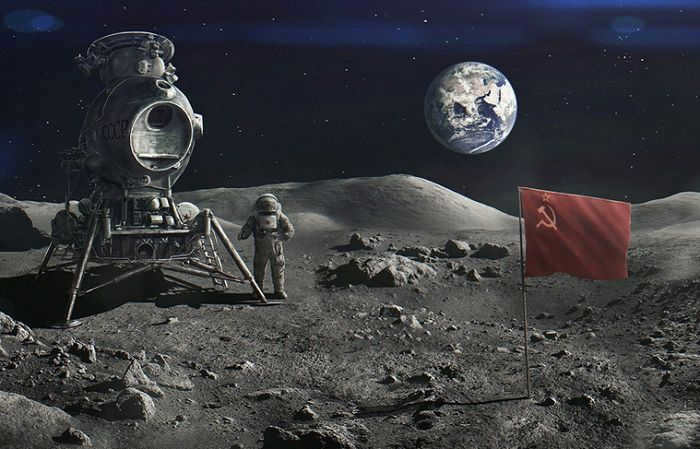
The phenomenon of the Earth’s rotation causing day and night
Every day, mankind witnesses the fascinating phenomenon of the change of day and night on Earth. This occurrence has intrigued our ancestors, leading to various theories that may now seem absurd.
Being a celestial body, the Earth adheres to the laws of space and engages in interactions with other cosmic entities. As the Earth rotates on its axis, it gradually turns towards or away from the Sun. The side that faces the Sun experiences daylight, while the opposite side remains in darkness, resulting in night time. Therefore, the duration when the Earth is facing the Sun is referred to as daytime, while the period when it turns away is known as nighttime.
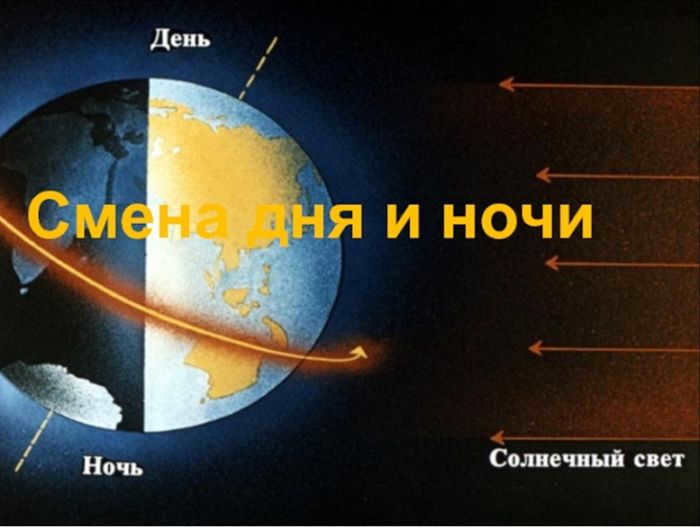
Therefore, the rotation of the Earth around its axis is the sole factor responsible for the alternating cycles of day and night. This axial revolution takes approximately 24 hours to complete, thus defining what we call a “day”. Traditionally, a day is subdivided into various segments:
- Morning – the sun emerges from the eastern horizon;
- Day – the sun traverses the sky from east to west;
- Evening – the sun sets in the western horizon, with the colors of the sunset gradually fading away;
- Night – a period of darkness, when the sun illuminates the opposite side of the planet.

The inequality of day and night on Earth is caused by the tilt of the Earth and its elliptical path around the sun. The duration of daylight varies constantly and is influenced by the changing seasons.
The transformation of Earth’s seasons
Due to the elliptical path that Earth follows in its orbit, the seasons undergo a change. Throughout this journey, our planet alternates between moving closer to the Sun and farther away from it. The distance between these celestial bodies ranges from 147.1 million kilometers to 152.1 million kilometers. In early June, Earth is at its farthest point from the Sun (152.1 million kilometers), while in January it reaches its closest point (147.1 million kilometers). It takes 365 days, or one year, for Earth to complete a full revolution around the Sun.
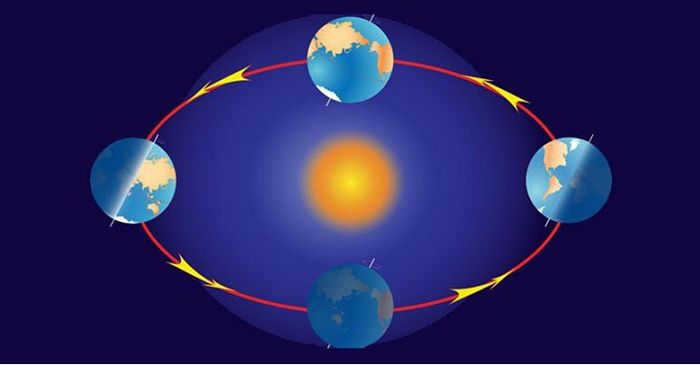
The Earth experiences uneven warming in different seasons due to its 23-degree tilt in relation to the Sun’s axis. This tilt causes the Sun’s rays to hit one hemisphere at a right angle and the other hemisphere at an acute angle. As a result, one part of the planet receives more heat than the other, leading to the arrival of summer in areas with more sunlight and winter in areas with less sunlight.
In Russia, the seasons are differentiated due to the Earth’s orbit around the Sun.

The weather on Earth varies greatly depending on the season. During winter, there is an increase in precipitation and a decrease in temperature. Summer, on the other hand, is characterized by longer daylight hours and warmer air. Spring and fall serve as transition periods, with the weather gradually changing during these times. Each season lasts for a duration of 3 months.
With the naked eye, thousands of twinkling dots can be seen in the sky, both from the surface of the Earth and from the surface of the moon. These dots are known as stars, and many of them come together to create constellations.

In order to fully appreciate the beauty of the night sky, it is necessary to venture outside the boundaries of the city. The air in urban areas is heavily polluted, resulting in a hazy effect. Additionally, the excessive street lighting creates interference during observation.
The most stunning view of the night sky can be enjoyed during the nighttime hours. So, what guidelines should be followed while stargazing:
- Children should only observe the stars in the presence of adults.
- In the evenings, after sunset, it is advisable to head to the countryside. It is crucial that the sky is not covered by clouds at this time.
- In order to clearly see the constellations in the night sky, there should be no nearby lanterns or other sources of illumination.
- A star map can be used as a helpful tool during observation.
- Observing the starry sky is most enjoyable when done from a higher vantage point. It is not recommended to do so from lowlands, as these areas are often prone to foggy conditions.
Under optimal circumstances, one can witness the luminous band of the Milky Way and become acquainted with prominent constellations such as Perseus, Canis Major, and Taurus. In certain instances, the naked eye may even catch a glimpse of the Andromeda galaxy, which is located a staggering 2.5 million light years away.
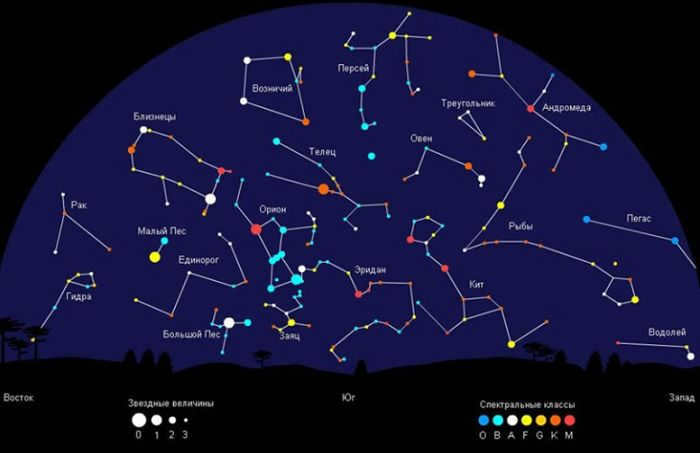

Equally fascinating objects are known as “falling stars”. However, it’s important to remember that they are actually cosmic grains or meteors that burn up in the earth’s upper atmosphere.
A pair of binoculars with 20x magnification is sufficient to observe the planets within our solar system. For a more enhanced experience of the night sky, a telescope is recommended. This powerful tool allows you to explore even the most distant celestial bodies.

In this assessment, you will discover which luminary your character is most similar to. Regardless of how bright or dark someone’s life may be, they can still be compared to a luminary. So let’s bring some light into this quiz!
Imagine yourself wearing a fresh and moist dress. You are standing by the sea in the evening. A gentle breeze cools your shoulders, preventing your hair from falling onto them. You wish to cover your shoulders, but there is nothing available to do so. What would you use to cover them?

A piece of jewelry in the form of a decorative pin.

A beautiful headpiece, commonly known as a tiara.

Earrings are a popular form of jewelry worn on the ears.

Ring.
Additional examinations:


🌠🌌☄️The conversation with the individual the following day will disappear☄️🌌🌠

Part 1: The events of 2120

Which celestial body do you represent?
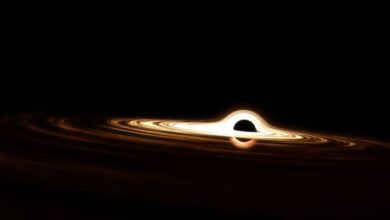
Space, the beloved universe. Part two
Responses: 23
Test results:
You have been identified as a comet!
A unique and radiant celestial object that resembles a shooting star with the size of a meteorite. The appearance of a comet is likely as extraordinary and unpredictable as your thoughts. Its journey is a stunning yet ephemeral phenomenon. However, the beautiful trail it leaves behind lasts in the sky for a considerable time. I believe that, like a comet, you have the ability to leave a brilliant yet gentle impact in this lifetime that will bring joy and inspiration to many individuals!
That’s quite amusing!
I had two options for each question, so I took the test twice. The first time I chose the stars… and the second time I chose the moon…
+3
You’re a comet!
A unique and radiant celestial body resembling a shooting star but with the dimensions of a meteorite. The appearance of a comet is as extraordinary and unpredictable as your thoughts. Its trajectory is a breathtaking yet transitory spectacle. However, it leaves an enduring mark in the sky. I believe that, like the comet, you have the ability to leave a dazzling and simultaneously delicate imprint on this existence, one that will bring joy and inspiration to countless individuals!
————————————————————————————————————————————
Perhaps it was my particular mindset while taking this assessment, but after revisiting the anime “Your Name,” comets seem to be everywhere… +3 for eloquence and originality.
You’re a comet!
This is an incredibly fascinating test, and it’s also worth noting that it is quite well-crafted. I didn’t even feel fatigued while answering the questions 😀
+3
You radiate like the sun!
Shining, warm, and the most brilliant light that a person can behold. These attributes can also be ingrained in your spirit. Much like the sun, people often seek in you a source of revitalization for their energy and happiness, qualities with which you can imbue them. This can be achieved not only through communication, but also through acts of kindness, benevolence, and creativity. If you are already doing this, congratulations! You are on the right path. And if you are not, I hope you will not be selfish and share your positive energies with others.
Your purpose in the human realm is to bestow positive energy, and you possess an abundance of it! Test +3
You radiate like the sun!
Brilliant, radiant, and the most dazzling light that one can behold. These qualities are also inherent to your very soul. Just like the sun, people often seek you out as a source of energy and joy, someone who can fill them up. This can be achieved not only through communication, but also through good deeds, kind acts, and creative endeavors. If you are already doing so, congratulations! You are on the right path. And if you haven’t, I hope you will be generous and share your positive energy with others.
Your purpose in this human world is to spread positive energy, of which you have an abundance!
You embody the essence of the moon.
The moon has always symbolized femininity and is revered as the epitome of beauty and romance. It has the power to bring together beautiful souls and ignite the spark of creativity. Unlike the sun, the moon doesn’t provide external warmth, but rather a warmth that resonates within. When people gaze upon the moon, they don’t feel the physical warmth it radiates, but rather an inner warmth that stirs their senses. Comparing you to the moon signifies that you possess a profound inner beauty.
Truly remarkable.
You are celestial bodies.
Each of your celestial bodies represents a unique concept. These concepts burn brightly against the backdrop of the sometimes gloomy surroundings. Surprisingly, it is during these dark times that these concepts shine even more brightly than they do in the daylight. The nighttime is a fertile ground for the birth of exceptional ideas. Celestial bodies can also symbolize tears and your slightly sensitive nature. They have the power to touch and inspire the hearts of impressionable individuals who can grasp the secret behind their radiant glow and their graceful movement across the sky. Yes, they move! Even though this movement may not always be visible. It is crucial for you to seek out celestial bodies like yourself and create your very own constellation. But even if you find yourself alone in the darkness, do not be afraid, for the brilliance of your celestial bodies will guide your way.
______________
Nice.)
+3
You represent the moon
For centuries, the moon has been seen as the embodiment of femininity and is widely regarded as the most exquisite and romantic celestial body. It has the power to create beautiful connections and ignite the imagination of creative individuals. Unlike the sun, the moon does not provide external warmth, but rather a sense of emotional warmth. When people gaze at the moon, they may not physically feel its warmth, but they experience a warmth that emanates from within. This is because the moon stirs the senses and awakens something deep inside. To be compared to the moon is to be recognized as a truly beautiful person on the inside.
On August 24, 2006, during the XXVI Assembly of the International Astronomical Union (IAU) in Prague, a group of 2500 astronomers made the decision that Pluto is not a planet, as previously believed, but rather a dwarf planet.
AiF.ru explores the reasons behind scientists’ determination that Pluto is classified as a dwarf planet.
Which celestial object qualifies as a planet?
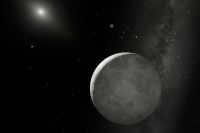
Only a celestial body that revolves around the Sun and has enough gravity to have a shape similar to a sphere can be classified as a planet. Additionally, a planet is a celestial body whose orbit does not intersect with any other objects.
Why is Pluto not considered a “planet”?
Based on the definition provided by the International Astronomical Union (IAU), a planet must fulfill three criteria:
1. It must orbit the Sun (or another star).
2. It must have sufficient mass to assume a spherical shape due to its own gravity.
3. It must have cleared its orbit of any similar-sized objects, except for its own satellites.
Pluto satisfies the first and second criteria, but it fails to meet the third condition as it has not yet achieved the feat of clearing its orbit. The dwarf planet’s mass accounts for only 0.07% of the total mass of all the objects in its orbit. In contrast, the Earth’s mass is a staggering 1.7 million times larger than that of the other celestial bodies in its orbit.
What is the name for a celestial object that can be classified as a dwarf planet?
As per the definition provided by the International Astronomical Union (IAU), a dwarf planet refers to a celestial body that:
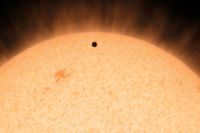
- The celestial body revolves around the Sun (or another star).
- It possesses enough mass to maintain hydrostatic equilibrium due to gravitational forces and has a nearly spherical shape.
- It is not a moon of a planet.
- It is unable to remove other objects from its orbit.
What do we know about Pluto?
Pluto is a well-known object in the Kuiper Belt and is considered to be one of the largest. Its orbit around the Sun takes approximately 248 Earth years. The planet’s atmosphere is composed of nitrogen and methane gases. With a diameter of around 2200 kilometers, Pluto has a surface temperature of about -210 °C.
In order to gather more information about Pluto, the New Horizons spacecraft was sent on a mission. On July 14, 2015, it came closest to the dwarf planet and captured images of its surface.
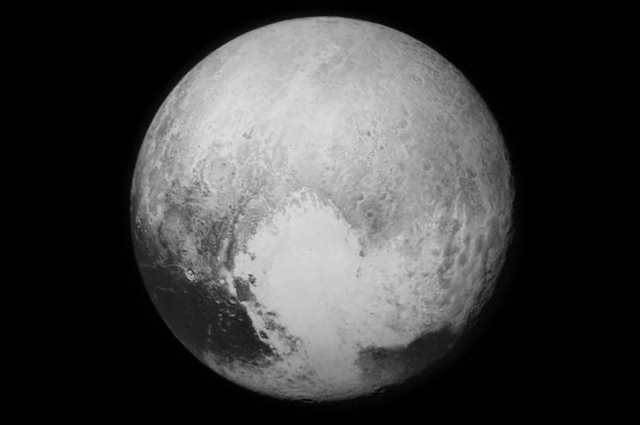
What is the reason behind the name given to Pluto?
The article discusses the characteristics and composition of celestial bodies, providing a list of the various entities within our planetary system. Additionally, it explores the reasons behind the movement of these celestial bodies.
Historical Perspective
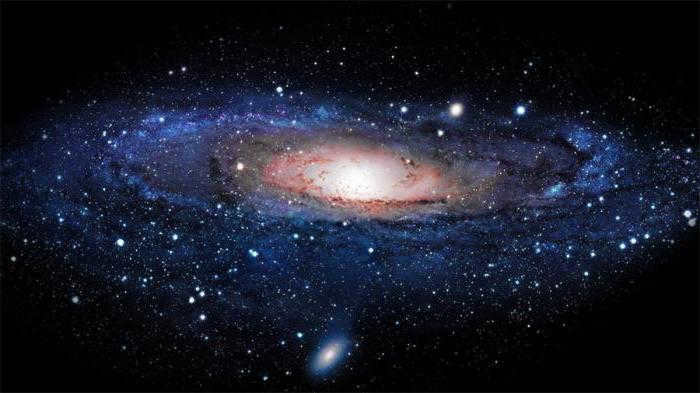
Since the dawn of humanity, the moon and the stars have captivated our attention. The moon, in particular, was worshipped by priests of various cults, along with the Sun. Even in the Middle Ages, early astronomers began to realize that the Earth is not flat and does not rest on the backs of three whales or turtles. They discovered that there are other planets, known as celestial bodies, that exist alongside us. But what exactly are these celestial bodies?
First and foremost, let’s establish the officially accepted terminology. According to this definition, celestial bodies are objects that are part of planetary systems. These objects revolve around a star or multiple stars that are at their center. Our planetary system, for example, is known as the Solar system, named after our central star. By studying our own system, we can gain a better understanding of what celestial bodies are.
Our Era
Often, people mistakenly associate the concept of celestial bodies only with planets and stars, but this is not an accurate understanding. Celestial bodies encompass all natural objects in space that orbit around the sun or another star. This includes not only planets and gas giants, but also their satellites. It is important to note that these objects are naturally occurring and not created by human beings.
In our solar system, there are a total of 8 planets. However, in the 19th century, there was a significant wave of astronomical discoveries that led to some confusion. During this time, certain large objects like the meteor belt or dwarf formations such as Ceres or Sedna were mistakenly classified as planets. These objects, though interesting, are actually too small to be considered full-fledged planets. So, what other celestial bodies can be found in our solar system?
Messenger of the Gods
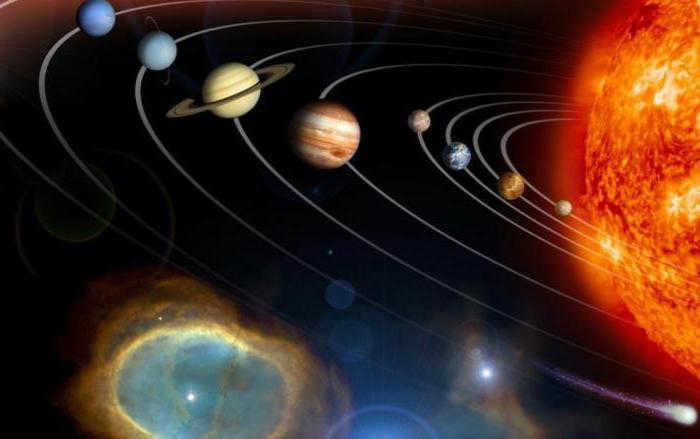
The planet closest to the central star is Mercury. It is a small rocky ball that always has one side facing the Sun, resulting in a minimal amount of atmosphere. The temperature difference between the day and night sides of Mercury can reach hundreds of degrees Celsius.
Venus
Venus, along with Mars, is considered Earth’s neighboring planet. Although it shares a similar size with Earth, it is uninhabitable and there are no immediate plans for researchers to land on it. This is due to its predominantly oxygen atmosphere, which creates a strong greenhouse effect. On the surface of Venus, there are liquid lakes of tin and sulfuric acid rains from the sky. These celestial bodies within our solar system can be incredibly inhospitable.
Planet Mars
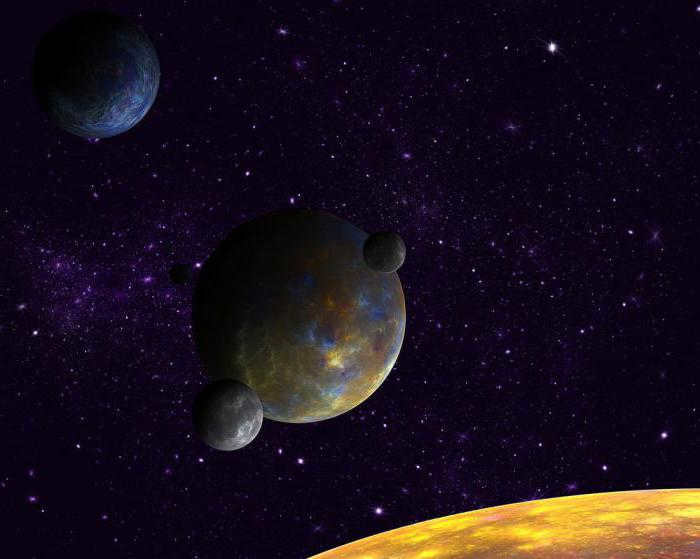
One more celestial body near our planet. This is a smaller planet compared to Earth and has relatively stable weather conditions. The atmosphere of this planet is highly rarefied due to the absence of a magnetic field, which would otherwise shield it from being “blown away” by solar winds.
Saturn: The Unfortunate Gas Giant that Almost Became a Star
Meet Saturn, a gas giant that narrowly missed out on being a star. Comprised primarily of hydrogen and helium, as you delve deeper into its atmosphere, the hydrogen transforms into a metallic state. But what truly sets Saturn apart is its impressive collection of satellites – a staggering 67 in total!
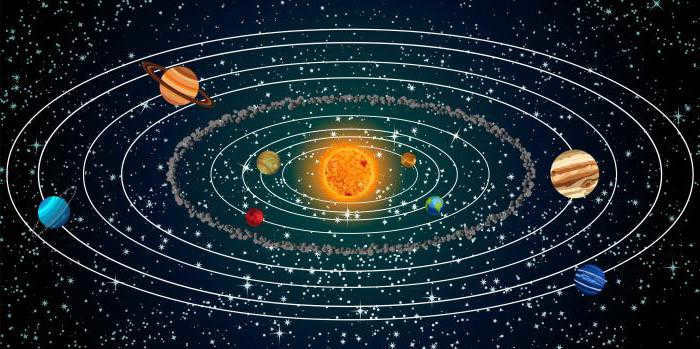
This particular celestial object is widely recognized for its distinctive rings. Additionally, it is classified as a gas giant and boasts a significant number of satellites – a total of 62.
Uranus and Neptune
These two planets are often grouped together due to their shared characteristics. Namely, they are primarily composed of ice, earning them the designation of “ice giants.”
However, what other celestial entity can be found within our solar system?
Dwarf Planets
There are several dwarf planets in our solar system, such as Pluto, Ceres, Haumea, and Makemake. Interestingly, Pluto used to be considered the ninth planet for a long time before being reclassified as a dwarf planet. It’s worth mentioning the asteroid belts as well, which are massive collections of irregularly shaped celestial bodies, resembling huge cobblestones.
The motion of the stars and planets
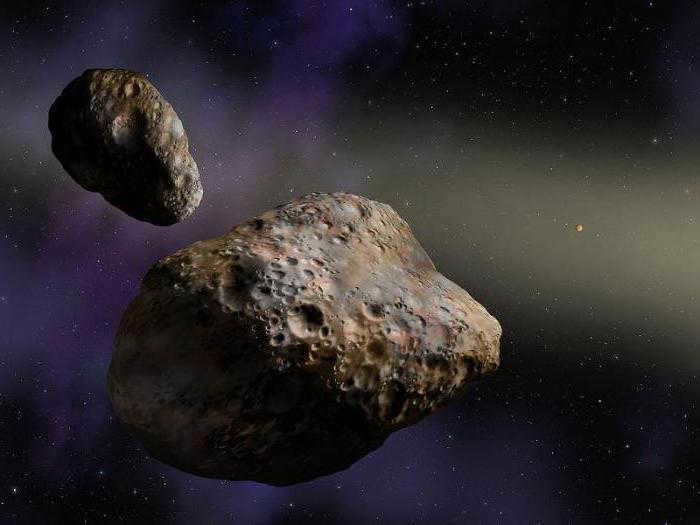
However, what causes the constant movement of these celestial bodies? In the vastness of space, where gravity is absent, one would expect the planets to remain stationary. While it is true that there is no conventional gravity, there is still a force at play that prevents them from coming to rest.
This force is known as gravity, which dictates that any two objects exert a mutual force of attraction on each other. The larger the objects, the stronger this force becomes. In the case of our solar system, the Sun’s immense mass generates enough gravitational pull to reach even the outermost reaches.
But if the planets are being pulled towards the Sun, why don’t they simply fall into it?
The explanation is rather straightforward: the objects in question do not plummet due to their rotational speed and the resulting centrifugal force, which counteracts the effects of gravity. This same principle applies to our Moon, which orbits around our planet without any signs of falling.
Regrettably, when it comes to the study and exploration of space, progress has been less than satisfactory. Even our own solar system remains largely unexplored, and there have recently been strong suspicions of the existence of a ninth planet, which lies beyond the orbit of Pluto and is several times more massive than Earth.
As for other star systems, the situation is even more disheartening. Even the most advanced telescopes can only observe stars, star clusters, and nebulae, but not alien planets. However, there is a growing reliance on a method that involves detecting periodic variations in a star’s brightness, which can indicate the presence of orbiting objects. This is how Kepler-440 b was discovered. Based on all available evidence, this planet could potentially have liquid water and perhaps even life, as it is located within the “habitable zone,” neither too far nor too close to its sun.





